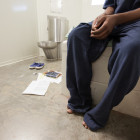
Tennessee lawmakers want more oversight of juvenile detention. The Department of Children’s Services is pushing back.
|
The commissioner of the Tennessee Department of Children’s Services publicly said this month that the agency was working with lawmakers to address oversight gaps at juvenile detention facilities across the state. But behind the scenes, the department is working to water down a bill that would do just that, according to one of the bill’s sponsors and others working on the legislation.








